E VOLUTIONARY B IOGEOGRAPHY
E VOLUTIONARY B IOGEOGRAPHY
An Integrative Approach with Case Studies
Juan J. Morrone
Professor of Biogeography, Systematics, and Comparative Biology
Facultad de Ciencias, Universidad Nacional Autnoma de Mxico (UNAM),
Mexico City
COLUMBIA UNIVERSITY PRESS

NEW YORK
Columbia University Press
Publishers Since 1893
New York Chichester, West Sussex
cup.columbia.edu
Copyright 2009 Columbia University Press
All rights reserved
E-ISBN 978-0-231-51283-1
Library of Congress Cataloging-in-Publication Data
Morrone, Juan J.
Evolutionary biogeography : an integrative approach with case studies / Juan J. Morrone.
p. cm.
Includes bibliographical references.
ISBN 978-0-231-14378-3 (cloth : alk. paper)ISBN 978-0-231-51283-1 (ebook)
1. Biogeography. 2. Biogeography--Case studies. I. Title.
QH84.M665 2009
578.09dc22
2008038927
A Columbia University Press E-book.
CUP would be pleased to hear about your reading experience with this e-book at .
References to Internet Web sites (URLs) were accurate at the time of writing. Neither the author nor Columbia University Press is responsible for URLs that may have expired or changed since the manuscript was prepared.
In memory of my mother, Lidia Lupi (19372008), who inspired me to love nature and truth.
There are three things that last forever: faith, hope, and love; and the greatest of the three is love.
1 Corinthians 13:13
When the miracle occurs, as it sometimes does; when, on one side and the other of the hidden crack, there are suddenly to be found cheek-by-jowl two green plants of hidden species, each of which has chosen the most favourable soil; and when at the same time two ammonites with unevenly intricate involutions can be glimpsed in the rocks, thus testifying in their own way to a gap of several tens of thousands of years suddenly space and time become one: the living diversity of the moment juxtaposes and perpetuates the ages. Thought and emotion move into a new dimension where every drop of sweat, every muscular movement, every gasp of breath becomes symbolic of a past history, the development of which is reproduced in my body, at the same time as my thought embraces its significance. I feel myself to be steeped in a more dense intelligibility, within which centuries and distances answer each other and speak with one and the same voice.
Claude Lvi-Strauss (1955), Tristes tropiques
Contents
The aim of this book is to provide a theoretical and practical guide to evolutionary biogeography for advanced undergraduate and beginning graduate students, academics, and anyone concerned with the study of biogeographic patterns and their evolution. It provides an introduction to evolutionary biogeography, its basic concepts, history, approaches, methods, developments, and case studies. I have assumed that the readers have a basic knowledge of phylogenetic systematics, so cladistic methods are not detailed. Some existing books deal with a specific biogeographic approach or with several methods but fail to provide a coherent framework from which one can choose the most appropriate, leaving the reader uncertain about how to address a particular problem. I discuss the available methods and suggest the appropriate step of a biogeographic analysis in which to use any particular one. The case studies (most from my own research) are intended to help the reader make a rational choice from among the approaches and methods available. I have also included problems, questions for discussion, and a glossary that can be used in the classroom.
In recent decades, biogeography has undergone much debate. Dispersalists, panbiogeographers, cladistic biogeographers, ecological biogeographers, macroecologists, and phylogeographers, among others, have disputed the relative merits of their approaches but have not worked toward their integration. However, a few authors have noted this lack of interaction recently and have stated that the integration of approaches and methods in biogeography is a salient issue. I hope this book can contribute to a future integrative biogeography.
I am indebted especially to my students for their insights and inspiration. Many thanks to my friends and colleagues Roxana Acosta, Alfredo Bueno Hernndez, Anglica Corona, Dalton de Sousa Amorim, Malte Ebach, Tania Escalante, David Espinosa Organista, Oscar Flores Villela, John Grehan, Gonzalo Halffter, Michael Heads, Anala Lanteri, Livia Len Paniagua, Jorge Llorente Bousquets, Ana Luz Mrquez, Susana Magalln, Juan Mrquez Luna, Rafael Miranda Esquivel, Adolfo Navarro Sigenza, Gareth Nelson, Silvio Nihei, Federico Ocampo, Jess Olivero, Rod Page, Gerardo Prez-Ponce de Len, Paula Posadas, Raimundo Real, Sergio Roig-Juent, Adriana Ruggiero, Luis A. Snchez-Gonzlez, Claudia Szumik, Hernn Vzquez, and Mario Zunino for helpful and stimulating discussions. I am also indebted to Malte Ebach, Tania Escalante, John Grehan, David Hafner, Michael Heads, Anala Lanteri, Rafael Miranda, Silvio Nihei, Federico Ocampo, Jess Olivero, Lynne Parenti, Paula Posadas, and Adriana Ruggiero for valuable comments on parts of the manuscript. Patrick Fitzgerald (Columbia University Press) and three anonymous reviewers provided very useful suggestions. In recent years my research has been supported by the Universidad Nacional Autnoma de Mxico, the Comisin Nacional para el Conocimiento y Uso de la Biodiversidad, and the Consejo Nacional de Ciencia y Tecnologa, Mxico; the National Geographic Society, United States; and the Fundacin Carolina, Spain. Parts of this book were written in Paris and Mlaga; thanks to my colleagues from the Universit Pierre et Marie Curie and the Universidad de Mlaga for hosting me during my sabbatical leave. For the last twelve years, Adrin Fortino has provided love, support, and encouragement.
Mexico City, February 20, 2008
Biotas are complex mosaics originated by dispersal and vicariance, having reticulate histories, which should be studied through different methods. Evolutionary biogeography integrates distributional, phylogenetic, molecular, and paleontological data in order to discover biogeographic patterns and assess the historical changes that have shaped them, following a stepwise approach. In this chapter I briefly introduce the steps of this approach.
One hundred fifty years ago, Charles Darwin published On the Origin of Species. The geographic distribution of plant and animal taxa was among the evidence he provided to support evolution. Although the fact that continents have their own distinctive biotas has been known for some time, from Darwin we learned that these biotas evolve, that their composition changes over time. In the nineteenth and twentieth centuries, biogeographers extensively debated the mechanisms leading to biotic evolution. In recent years some authors have concluded that dispersal and vicariance are both relevant processes. When climatic and geographic factors are favorable, organisms actively expand their geographic distribution according to their dispersal capabilities, thus acquiring their ancestral distribution (dispersal). When the organisms have occupied all available space, their distribution may stabilize, allowing the isolation of populations in different sectors of the area and the differentiation of new species through the appearance of geographic barriers (vicariance).
To analyze the resulting complex patterns, we should identify particular questions, choose the most appropriate methods to answer them, and finally integrate them in a coherent framework. Most of the authors who are involved in the theoretical development of biogeography or who apply their methods usually conceive them as representing alternative schools; however, they can be used to answer different questions. Evolutionary biogeography integrates distributional, phylogenetic, molecular, and paleontological data in order to discover biogeographic patterns and assess the historical changes that have shaped them. It follows a stepwise approach (). Each of its steps is discussed in a different chapter of this book.

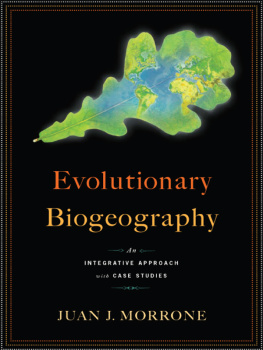
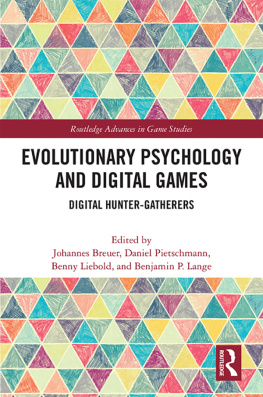



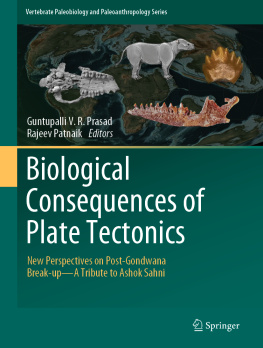
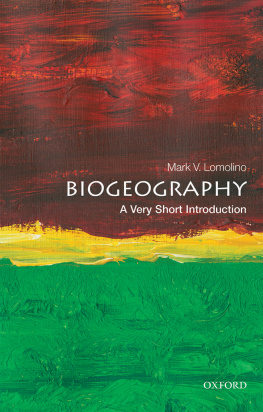
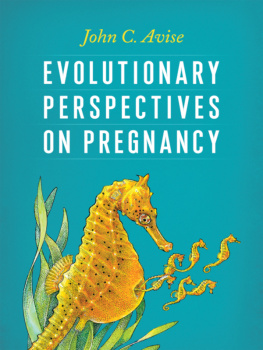

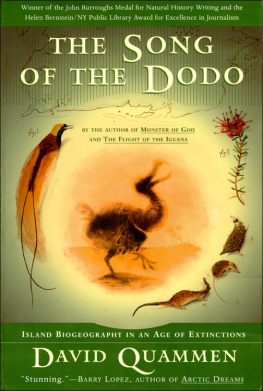
 NEW YORK
NEW YORK